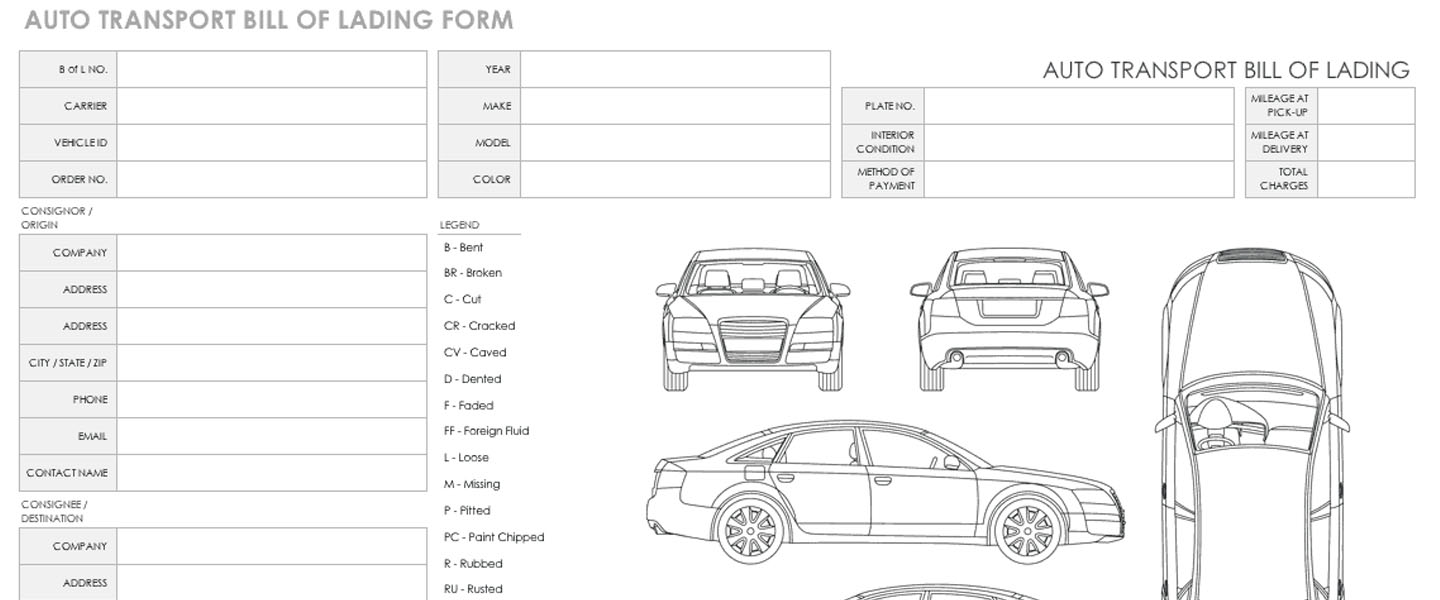When shipping a vehicle, the Bill of Lading (BOL) is one of the most important documents you’ll encounter. Often overlooked by customers, the BOL serves as both a receipt and a contract between you and the carrier. It outlines the terms of the transport, the condition of your vehicle before and after the journey, and provides legal protection in the event of a dispute. Understanding the BOL and ensuring all necessary information is accurate before signing is crucial to protecting your investment.
At Simple Car Shipping LLC, we understand how overwhelming the auto transport process can be, especially when it comes to understanding critical documents like the BOL. That’s why we make it a priority to walk our customers through every step of the process, ensuring they know exactly what to look for before signing off. We believe that a well-informed customer is a protected customer.
The primary purpose of the BOL in auto transport is to document the vehicle’s condition at both pickup and delivery. This document acts as proof of what was agreed upon between you and the carrier. It includes essential details such as the vehicle’s make, model, and VIN, along with pickup and delivery locations. However, one of the most critical sections of the BOL is the vehicle condition report. This report should be filled out meticulously, noting any pre-existing damages like scratches, dents, or other issues. Having a detailed record of your vehicle’s condition ensures that any new damages incurred during transport are clearly identifiable and traceable.
Before signing the BOL, it’s imperative to inspect your vehicle thoroughly. This step cannot be overstated, as failing to note damages before signing the BOL can lead to significant issues later on. If you sign the document without noting any damage, you’re essentially stating that the vehicle was delivered in the same condition as it was picked up. This can make it incredibly difficult to file a successful claim if you later discover that your car was damaged during transport. Unfortunately, some carriers may try to rush you through this process, downplaying the importance of a careful inspection. It’s not uncommon for carriers to gloss over minor damages or even attempt to pressure you into signing the BOL quickly, knowing that they might be responsible for something.
If you do notice any damage upon delivery, it’s essential to document it immediately on the BOL. Take photos, make detailed notes, and ensure that both you and the carrier sign off on these notations. This documentation is crucial for any insurance claims you may need to file. The BOL will be your primary piece of evidence in proving that the damage occurred while the vehicle was in the carrier’s possession. Without these notations, the carrier’s insurance may deny your claim, leaving you to cover the repair costs out of pocket.
In conclusion, the Bill of Lading is a powerful tool in protecting your interests when shipping a vehicle. By understanding its purpose, ensuring all the necessary information is included, and refusing to sign until you’ve thoroughly inspected your car, you can avoid costly mistakes. Never feel pressured to rush through the process—taking the time to review the BOL carefully can save you significant hassle and expense in the long run. Remember, the BOL isn’t just a formality; it’s your safeguard against potential issues in auto transport.
Here are some references that provide information on the Bill of Lading (BOL) in auto transport:
Federal Motor Carrier Safety Administration (FMCSA) – Bill of Lading Information
- This site provides detailed information on the Bill of Lading requirements for carriers, including what needs to be included and why it’s important.
- FMCSA BOL Information
Maersk – Bill of Lading Information
- Maersk provides detailed insights into the Bill of Lading and its crucial role in international shipping, highlighting how it functions as a receipt and a contract for cargo transport.
- Maersk Bill of Lading Overview
Author: Drew Levine owner of Simple Car Shipping LLC

